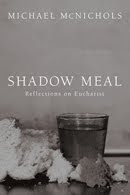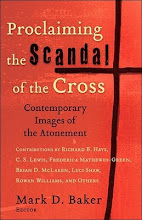
My church experience for many years was, for the most part, based in low-church evangelical settings. I am grateful for much of the formation that occurred in my life during those years, but over time I have found myself drawn to more liturgical settings in worship. Even as a pastor in a non-liturgical church tradition, I found myself adopting a number of liturgical practices (to the consternation of some of the fine folks who were part of my congregation) into our weekly gatherings.
I thought about this transition as my wife and I drove to the university campus chapel where our church gathers on Sundays. We had a challenging time getting there because of the traffic jam caused by people flocking to the Easter event at the fair grounds across the street. Lots of folks were attempting to get to that large and highly publicized service, and I hope it was an important and meaningful time for them.
The service I attended, by contrast, was comparatively small and quiet. The chapel was adorned with the traditional colors of Easter, and people entered the room quietly and with a sense of reverence. The music drew us into a time of worship, provided by musicians who were not only skilled but also attentive to the environment of praise and adoration that was emerging as they sang and played.
There were prayers and readings shared by all, and a time of passing hope to one another with the words “peace be with you.” All were participants, and none could be mere spectators. This was truly a work of the people. The priest offered a homily rich with content, reflection, and personal challenge. Each person attached flowers to a wooden cross at the front of the chapel, transforming it from a flat, non-descript symbol to a 3-D explosion of real and substantial color. At the end, we gathered around the table of Jesus, confident that we were responding to his invitation to come and dine.
I’ve been to several highly-produced Easter services over the years. Some of them were meaningful events, but they tended to stay that way for me—as events. Not much was different once I had lunch and took a nap (that probably says more about me than it does the services I attended). What is different for me now is that in a setting such as the one I experienced yesterday I am drawn anew into the story of God’s mission in the world, a mission that comes to us in and through the life, death, and resurrection of Jesus. And I remember that it is a story that I share with people all over the planet.
I have come to believe that the continuous rehearsal of this great story is crucial, not only because it keeps the memory alive in our minds, but also because my ongoing story continues to find meaning there. It is not a story informed by the scripts of dead actors, but rather a story alive with the presence of the author himself. It is in this constant re-engagement that Jesus meets me, along with my brothers and sisters, as our stories become centered in his story.























No comments:
Post a Comment